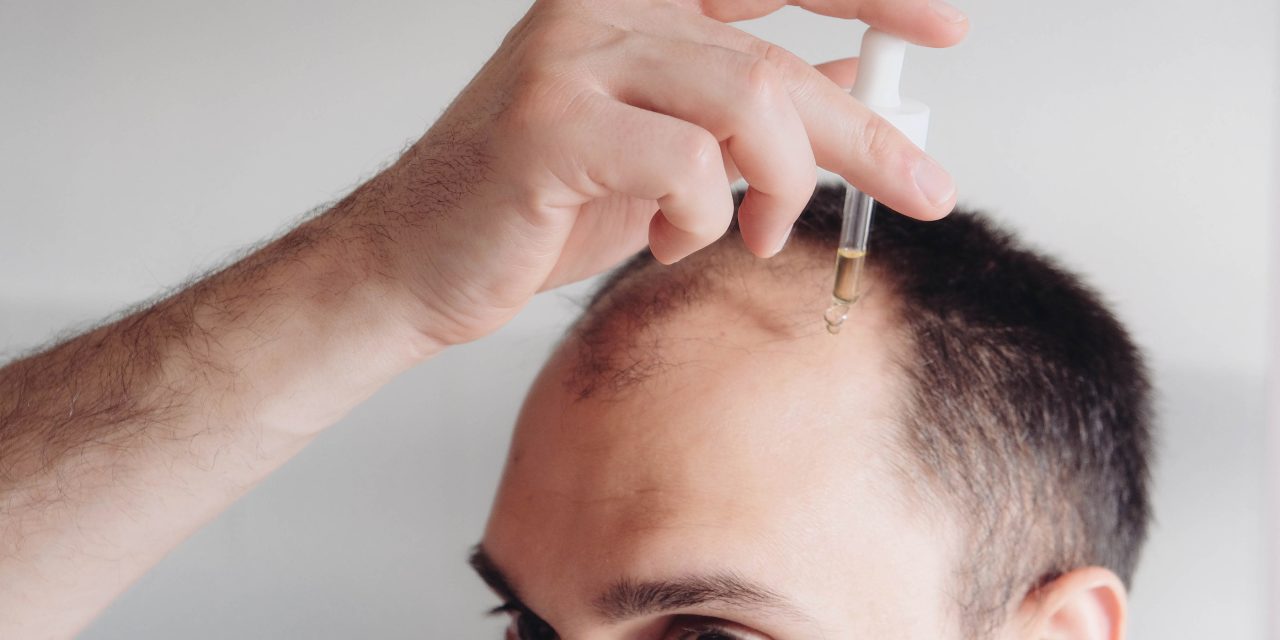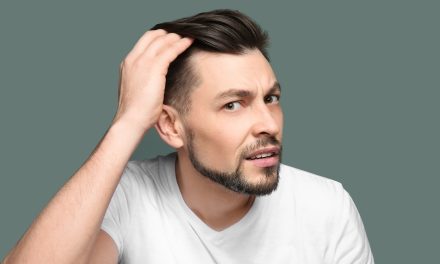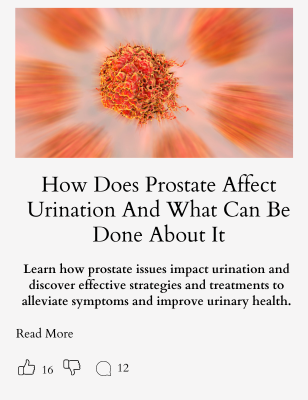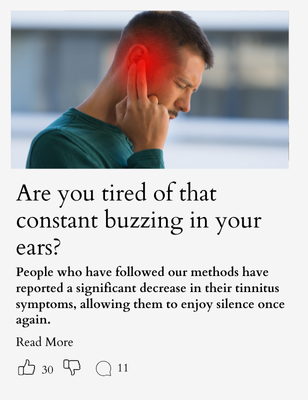Many people wonder if hair loss can genuinely be reversed, given how prevalent and distressing it can be.
The good news is that certain treatments and approaches can help reverse hair loss, depending on the underlying cause.
From genetics to aging, various factors contribute to hair loss, and addressing the root cause is key to potential regrowth.

Medical treatments like finasteride and minoxidil have shown promise in encouraging hair regrowth.
Emerging research, such as restoring mitochondrial function in mice, points to innovative ways to combat the problem.
Lifestyle changes and natural remedies also play a significant role in managing hair health and preventing further loss.
To navigate the vast pool of information effectively, consulting with professionals offers tailored guidance.
By understanding the various causes and treatments, individuals can make informed decisions about reversing hair loss and maintaining healthy hair.
Key Takeaways
- Hair loss can sometimes be reversed with the right approach.
- Medical treatments and lifestyle changes are effective in promoting hair regrowth.
- Professional advice is essential for tailored treatment solutions.
Understanding Hair Loss
Hair loss affects many people and can be caused by a variety of factors, including genetics and hormonal changes. Several types of alopecia exist, each with its own characteristics and causes.
Causes of Hair Loss
Hair loss can result from multiple factors.
Stress and nutritional deficiencies often contribute to this condition. Poor diet lacking in essential nutrients like iron and zinc can weaken hair follicles, leading to shedding.
Additionally, age-related hair loss is common as the hair growth cycle slows down over the years.
Certain medical conditions, like autoimmune diseases, can trigger hair loss, as the body’s immune system mistakenly attacks the hair follicles. Medications for diseases, including cancer and arthritis, can also lead to hair thinning or loss.
Exposure to harsh hair treatments, like bleaching and frequent heat styling, can damage hair strands over time. While some causes are temporary, others may require long-term treatment.
Different Types of Alopecia
Alopecia is a term used to describe various forms of hair loss.
Androgenetic alopecia, often referred to as male or female pattern baldness, is the most common type. It involves gradual thinning of hair due to genetic and hormonal factors.
Telogen effluvium occurs when stress or shock pushes large numbers of hair follicles into a resting phase. This leads to sudden hair shedding after a few months but is usually temporary.
Alopecia areata is an autoimmune condition where the immune system attacks hair follicles, causing patchy bald spots. In severe cases, it can progress to total hair loss on the scalp or body.
Hormonal Changes and Hair Loss
Hormonal changes can significantly impact hair growth and loss.
Pregnancy, childbirth, and menopause often lead to shifts in estrogen and progesterone levels, which can affect hair density. Increased hair shedding might be noticeable a few months after giving birth or during menopause.
Testosterone and its derivative, dihydrotestosterone (DHT), play a key role in androgenetic alopecia. DHT binds to hair follicles, causing them to shrink and produce thinner hair strands. Over time, this process can lead to baldness.
Thyroid issues can lead to significant hair changes. Both hypothyroidism and hyperthyroidism can trigger hair loss, as the imbalance in thyroid hormones disrupts the hair growth cycle.
The Role of Genetics in Hair Loss
Genetics heavily influences the likelihood of experiencing hair loss.
Family history of hair thinning or baldness often puts individuals at higher risk. Androgenetic alopecia is primarily hereditary, with patterns of inheritance passing down from both sides of the family.
Parents who have male or female pattern baldness are likely to transmit these genes to their children. These genetic factors can influence the age at which hair loss begins and its severity.
Research continues to explore the specific genes involved in hair loss. Understanding these genetic influences can help in developing targeted treatments for those predisposed to alopecia.
Diagnosis and Professional Guidance
Understanding the process of diagnosing hair loss and seeking professional help is crucial for effective treatment.
Accurate diagnosis by a dermatologist can lead to better management and potentially reversing certain types of hair loss.
Seeking a Dermatologist’s Opinion
Consulting a dermatologist is important when facing hair loss issues. Dermatologists specialize in skin and hair health. They can offer insights into the underlying causes of hair shedding or thinning.
A specialist may inquire about medical history and conduct necessary tests to determine the reason for hair loss. This step is vital, as self-diagnosis can often lead to improper treatment.
To learn more about diagnosing hair loss, you may consult related resources, such as studies on the evaluation and treatment of pattern hair loss.
What to Expect During a Physical Exam
A physical exam conducted by a dermatologist will likely focus on the scalp and hair health. Dermatologists may look for patterns of hair loss that indicate common conditions, like androgenetic alopecia.
During the exam, they might check for other skin conditions that could contribute to hair problems. Sometimes, a dermatologist might use a magnifying tool to get a closer look at hair follicles. This helps them make an accurate diagnosis.
Expect questions about lifestyle, diet, and stress levels, as these can affect hair health. In some cases, blood tests are used to identify hormonal imbalances or nutritional deficiencies contributing to hair loss.
The Importance of Accurate Diagnosis
Accurate diagnosis is crucial to selecting the best treatment plan for hair loss. Misdiagnosis can lead to ineffective treatments that may worsen the condition.
When diagnosed correctly, treatment options such as medication, lifestyle changes, or surgery can be tailored to the individual’s needs.
Specialists might recommend a series of tests to ensure they understand the root cause. For women, conditions like female pattern hair loss require specific diagnosis strategies.
Accurate diagnosis plays a key role in managing expectations and setting realistic goals for treatment.
Medical Treatments for Hair Loss
There are several medical treatments for hair loss that vary in terms of approach and effectiveness. Some focus on medication while others involve surgical or emerging techniques. Each method offers different results, with some promoting regrowth and others aiming to slow down hair loss.
Prescription Medications
Prescription medications play a significant role in treating hair loss. Two prominent FDA-approved treatments are minoxidil and finasteride.
Minoxidil, often branded as Rogaine, is applied topically and can help stimulate hair growth in both men and women.
Finasteride, sold under names like Propecia, is an oral medication that slows the production of a hormone associated with hair loss. Although effective, these medications can take several months to show noticeable results and may have side effects.
Spironolactone is another prescription option primarily used for women, as it blocks the effects of certain hormones that can cause hair thinning.
Over the Counter Solutions
Over the counter solutions include various topical treatments and supplements. Minoxidil falls into this category, available without a prescription in forms like foam and liquid.
Products containing saw palmetto, a plant extract, are also popular for those looking for more natural options. Some shampoos and conditioners claim to reduce hair loss or thicken hair, but results can be inconsistent.
These solutions are generally safe to use but consulting with a healthcare provider is recommended before starting any new treatment.
Advanced Surgical Options
When medications do not provide the desired results, surgical options like hair transplant surgery may be considered.
This procedure involves moving hair follicles from one part of the body to the thinning area. It’s a well-established method with a high success rate for restoring natural-looking hair.
Platelet-rich plasma (PRP) therapy is another advanced option, where plasma from the patient’s blood is injected into the scalp to stimulate hair growth.
Low-level laser light therapy is also gaining attention as a non-invasive treatment to enhance hair density.
Emerging Therapies
Emerging therapies are continually being researched. These include advancements in laser therapy and new drug formulations targeting hair loss.
PRP, while already in use, is seeing improvements in technique and application for better results.
Research is ongoing into other drugs and biological treatments that might offer alternatives to current options.
These therapies aim to provide more effective or faster results with fewer side effects compared to traditional methods.
As technology advances, new options may become available, offering hope for those affected by hair loss.
Natural and Alternative Approaches
Natural and alternative options for hair health often focus on dietary adjustments, herbs, and natural oils. These methods aim to nourish the scalp and promote growth through non-invasive means.
Nutritional Supplements and Vitamins
Nutritional supplements play a significant role in hair health.
Vitamins A, B, C, and D are essential for maintaining hair vitality. Biotin and zinc are known to support hair strength, while iron helps prevent hair loss.
Many people choose dietary supplements to fill gaps in their nutrition. For example, a lack of vitamin D is linked to hair shedding, making its supplementation beneficial.
Selenium and other minerals also support healthy hair follicles, contributing to overall hair growth.
Herbal Remedies and Essential Oils
Herbal remedies often include natural substances like coconut oil and olive oil to nourish the scalp. These oils are known for their moisturizing properties.
Peppermint and rosemary essential oils are sometimes used to stimulate hair growth by improving blood circulation in the scalp. Applying these oils regularly can help strengthen hair roots.
More research is needed to fully confirm their effectiveness, but many find these natural solutions beneficial in maintaining healthy hair.
The Impact of Diet on Hair Health
Diet significantly affects hair growth and health.
A Mediterranean diet, rich in fruits, vegetables, and lean proteins, provides essential nutrients.
Protein is a crucial component of hair, as it’s made of keratin, a type of protein. Consuming adequate protein helps maintain hair strength and structure.
Foods rich in vitamin C like citrus fruits can help with iron absorption, further promoting hair health.
A balanced diet is often considered one of the most effective ways to naturally enhance hair vitality.
Lifestyle Factors and Hair Care
Taking care of hair and modifying lifestyle habits can significantly impact hair health and growth. Factors like effective hair care routines and minimizing stress contribute to better hair quality.
Effective Hair Care Routine
Establishing a proper hair care routine is vital for maintaining healthy hair.
Regular washing with a mild shampoo helps to keep the scalp clean and free of excess oil. Using a conditioner can improve hair texture and manageability.
Incorporate a routine scalp massage to increase blood flow and stimulate hair follicles. Applying a deep conditioning treatment once a week can provide additional nourishment.
Avoid washing hair with water that is too hot, as it can strip hair of natural oils, making it dry and brittle. Regular trims to remove split ends help maintain overall hair health and promote growth.
Modifying Hairstyling Habits
Hairstyles that pull tightly on the scalp, like ponytails or braids, can damage hair over time. It’s important to switch up styles frequently to avoid constant tension on the same areas.
Consider using styling products sparingly and choose those that are alcohol-free to prevent drying out your hair.
Tools like straighteners and curling irons can cause heat damage, so it is advisable to limit their use or incorporate heat protectant sprays when styling.
Allowing hair to air dry instead of using a blow dryer can also reduce the risk of damage and preserve hair moisture.
Reducing Physical and Emotional Stress
Stress can negatively affect hair health, potentially leading to hair loss.
Incorporating stress-reducing activities such as yoga, meditation, or regular exercise can have positive effects on hair growth.
Ensuring adequate sleep and a balanced diet rich in vitamins and minerals supports overall health, including hair health.
It’s beneficial to find time for hobbies or activities that promote relaxation, as emotional balance is vital for maintaining healthy hair.
Making lifestyle changes that reduce exposure to physical stress related to tight styles or harsh chemical treatments also supports healthier hair.
Understanding the Hair Growth Cycle
The hair growth cycle includes three phases: anagen (growth), catagen (transitional), and telogen (resting).
Understanding this cycle helps in identifying when hair loss occurs. Anagen lasts several years, allowing hair to grow long.
Catagen is short, lasting a couple of weeks when growth stops. Telogen lasts a few months, where hair falls out to make way for new growth.
Regulating this cycle is crucial for healthy hair. Factors like diet, stress, and hormones can disrupt it, leading to hair thinning or loss.
Nutrition is vital for maintaining the cycle. Vitamins and minerals, especially iron and vitamin D, support robust hair growth.
Proper understanding offers a foundation for preventing excessive loss.
Strategies to Stop Hair Shedding
To stop hair shedding, it’s important to look into diet, hair care routines, and stress management.
Reducing stress, through exercise or meditation, affects hair health positively. Stress can trigger shedding by pushing more hairs into the telogen phase.
A balanced diet rich in protein, iron, zinc, and omega-3 fatty acids strengthens hair.
Scalp massages improve circulation, encouraging growth. They’re simple and effective.
Gentle hair care is also crucial. Avoiding tight hairstyles, harsh chemical treatments, and excessive heat can decrease breakage and shedding significantly.
Protecting Hair Follicles
Protecting hair follicles from damage involves minimizing inflammation and supporting the immune system. Inflammation can weaken follicles, leading to hair density reduction.
Anti-inflammatory foods, like berries and fatty fish, can be beneficial.
Gentle cleansing with mild shampoos prevents irritation. Aloe vera and tea tree oil help soothe the scalp and protect follicles.
Regularly monitoring scalp health ensures follicles stay strong. Lifestyle changes, such as quitting smoking and reducing alcohol, promote a healthy environment for hair. Finasteride is a medical option that prevents hair loss by inhibiting certain hormones, showing substantial results in some cases.
Regrowth and Maintenance
Hair regrowth and maintenance are essential for managing both temporary and permanent hair loss. Techniques like specialized shampoos and hair transplants can be key strategies.
Regular care and addressing physical stress on hair are also vital to foster confidence and encourage healthy growth.
Enhancing Hair Regrowth
Regrowth can be boosted through various methods. Key among them is the use of specialized shampoos designed to strengthen hair and maintain scalp health. Ingredients like biotin and keratin are often included to support hair growth.
Hair transplants offer another option. This surgical procedure moves hair follicles from denser areas to balding spots. It is effective but requires careful consideration due to cost and complexity.
Nutritional support is also beneficial. Vitamins A, C, and D are important for hair health. Antioxidants can play a role in promoting hair regrowth. These measures help restore hair and improve overall appearance.
Long-term Maintenance Strategies
Keeping hair healthy long-term involves regular care and lifestyle adjustments. Using gentle shampoos suitable for one’s hair type can prevent damage and slow hair loss.
Conditioning and protecting hair from harsh environmental factors are also crucial.
Reducing physical stress on hair, such as limiting heat styling and avoiding tight hairstyles, can make a difference.
Regularly trimming hair and ensuring a balanced diet rich in nutrients can maintain hair’s strength and vitality.
For those facing permanent hair loss, ongoing treatments like minoxidil can help maintain existing hair and slow further loss. This careful maintenance can boost confidence and contribute to a healthier hair appearance.
Special Considerations
When addressing hair loss, it’s important to consider various medical and life stage factors. Issues like chemotherapy and hormonal changes can significantly impact hair health. Understanding the role of these elements helps in managing hair loss effectively.
Hair Loss Due to Medical Conditions
Medical conditions can be a significant factor in hair loss. Treatments like chemotherapy can lead to temporary hair loss as they target rapidly dividing cells, including those in hair follicles.
Autoimmune disorders such as alopecia areata cause the body to attack its hair follicles, resulting in patchy hair loss.
Cicatricial alopecia is another condition leading to permanent hair loss, as the inflammation destroys hair follicles. Early diagnosis and treatment are crucial to manage these conditions. Dermatologists may use topical or oral medications to reduce inflammation and promote regrowth. Understanding the root cause is key to tailoring an appropriate treatment plan.
Postpartum and Menopause-Related Issues
Hormonal changes during postpartum and menopause can greatly affect hair density and health. After childbirth, many women experience temporary hair shedding due to hormonal shifts. This type of hair loss usually corrects itself over time as hormone levels stabilize.
During menopause, hormonal levels change significantly, often leading to female-pattern hair loss. This condition may result in thinning hair, especially at the crown. Treatment options like topical minoxidil can be effective in promoting hair growth.
Strategies such as a balanced diet rich in vitamins and minerals can support hair health during these life stages. Proper care and gentle hair practices also play a vital role in managing hair health.
Frequently Asked Questions
Hair loss can be a distressing issue for many, but solutions are available. Methods to stop hair fall, regrow hair, and understand why hair loss occurs in females are discussed.
How to stop hair fall immediately?
To quickly reduce hair fall, it is important to avoid harsh hairstyles and use a mild shampoo.
Following a diet rich in vitamins and iron can also help. Some suggest scalp massages may improve circulation and reduce hair fall.
How to regrow thinning hair for females?
Females can explore treatments like minoxidil, which is often recommended for stimulating hair growth.
Maintaining a balanced diet and managing stress are also important factors. Consulting a healthcare professional can provide personalized strategies.
What is the best hair loss treatment for females?
A combination of treatments may work best, including topical solutions like minoxidil, prescription medications, and in some cases, hormone therapy.
Seeking advice from a dermatologist can ensure the most suitable treatment is chosen.
What are the reasons for hair fall in females?
Hair loss in females can stem from hormonal changes, stress, and nutritional deficiencies. Conditions like androgenetic alopecia and autoimmune diseases can also play a role. Identifying the underlying cause is key to treating the issue effectively.
Is it possible to regrow lost hair?
Regrowing lost hair is possible with the right treatment. Options such as finasteride and lifestyle changes can promote regrowth. Results may vary, so patience and consistency are essential.
Can thinning hair become thick again?
Thinning hair can regain thickness through a healthy diet and hair care regimen. Treatments like biotin supplementation can improve thickness. Proper hair care practices are also important. Consistent care and possibly professional treatments can enhance overall hair health.
















